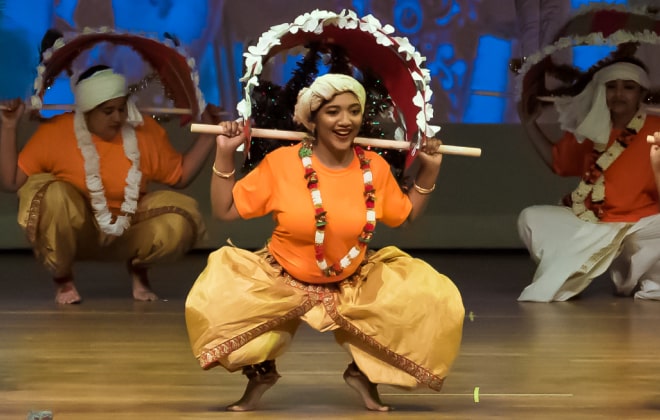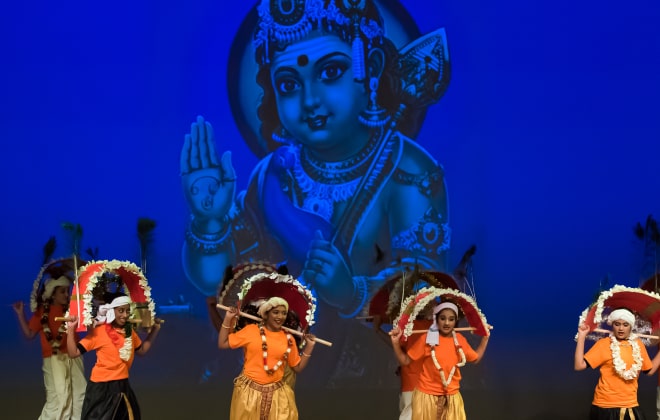Kavadi Attam originated in the South Indian state of Tamil Nadu in a small town called Palani. The ritual dance is rooted in the tale of a giant Idumban who is believed to have carried the Palani hills across his shoulders in the form of a Kavadi.
The Kavadi Attam, also translated as the 'Carrying of the Burden' dance, is a ceremonial sacrifice performed as an offering by devotees of the Hindu deity Murugan, Kartikeyan, Son of Lord Shiva and Goddess Paravati. Each devotee carries on their shoulder an ornate kavadi– a long bamboo pole suspended with bamboo pails at both ends, filled with flowers.

The dance form has structured movements and is a form of community dance performed during the festival Thaipusam. The Kavadi Attam is often performed in a state of trance at temples. The dance movements are not choreographed or practiced but exhibit movements of being in suspended animation.
Six types of Kavadis are performed during Thaipusam– Paal Kavadi, Thol Kavadi, Alavu Kavadi, Koodam Mulle, Vette Mulle, and Mayil Kavadi.
Movements of the peacock, believed to be Lord Muruga's vehicle, are incorporated into the dance. The actions involve the acts of balancing and controlling the Kavadi. Steps and formations from other folk forms are also visible in Kavadi Attam, especially Karagattam and Mayil Attam. Women are generally dressed in bright yellow, saffron, or red saris. At the same time, the men wear a saffron-colored dhoti and are often bare-chested, wearing a garland around the neck.

Devotees performing Kavadi Attam smear sacred ash on their bodies. Carrying the Kavadi is believed as an endurance test for all the devotees to receive the blessings of Lord Murugan.